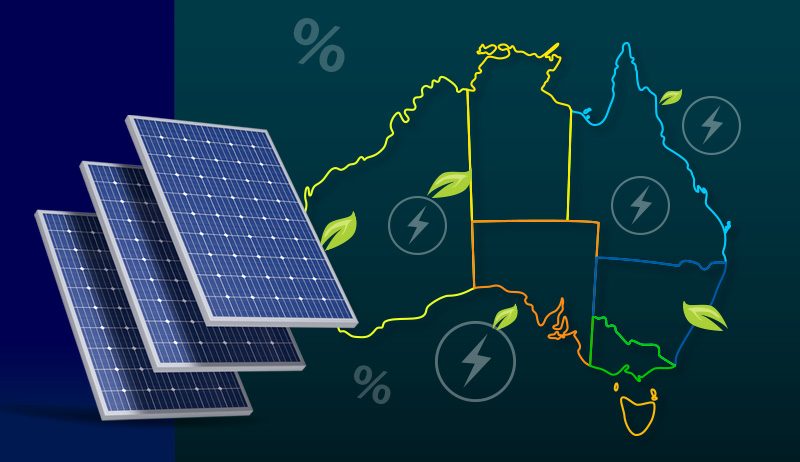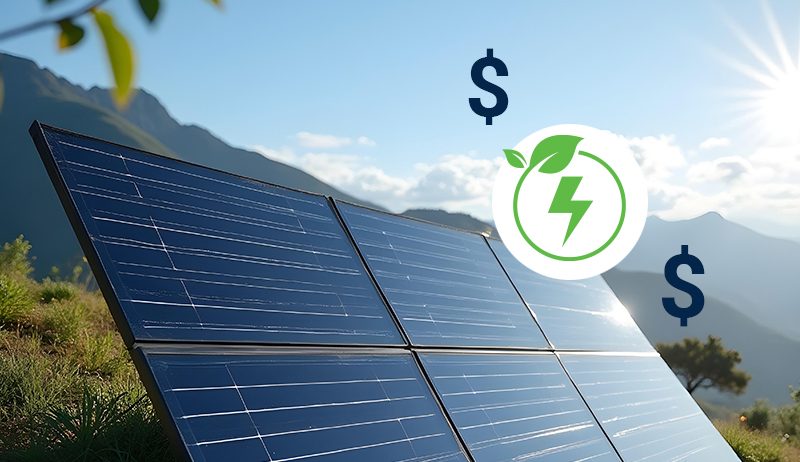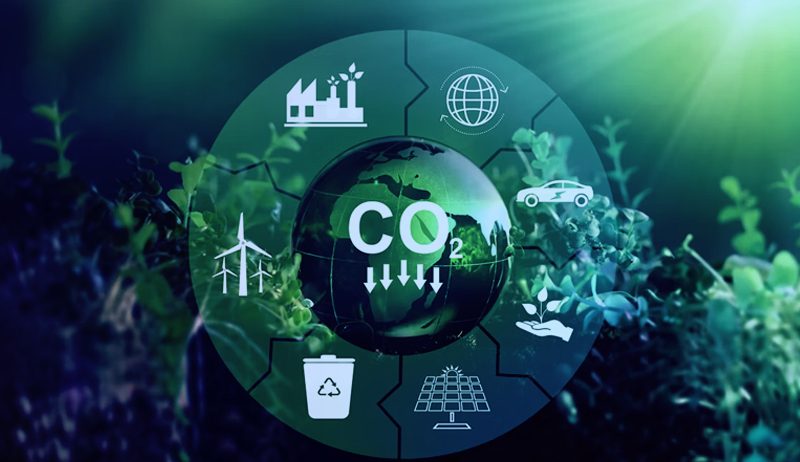Energy efficiency in manufacturing is a key driver of economic growth and sustainability in Australia.
As industries face increasing pressure to reduce carbon emissions and lower operational costs, energy-efficient technologies and processes are becoming more crucial than ever.
With global shifts toward cleaner energy sources, Australia’s manufacturing sector is transforming to balance productivity with environmental responsibility.
This article explores the key trends, technologies, and policy developments that will define the future of energy efficiency in manufacturing for Australia.
The Australian government has set ambitious net-zero emission targets, pushing industries to adopt innovative solutions to improve energy efficiency.
Advances in automation, artificial intelligence (AI), and smart manufacturing optimise energy use, while integrating renewable energy sources like solar and wind reduces reliance on fossil fuels.
Additionally, businesses focus on sustainable practices such as circular economy models, energy-efficient machinery, and waste heat recovery to cut energy consumption.
What is Energy Efficiency?
Australia’s energy industry has a significant impact on the climate. That’s why energy efficiency—using less energy to get the same results—is essential for reducing greenhouse gas emissions.
While making things more energy-efficient can cost money initially, it usually saves money for homes and businesses. This makes it an excellent solution for both the economy and the environment.
Energy efficiency can be applied everywhere, from houses and factories to transportation and offices. Energy efficiency plays a crucial role in reaching net-zero emissions.
Why is Energy Efficiency Important?
Using energy more efficiently helps lower emissions from manufacturing, heating and cooling buildings, and running vehicles. While people can take steps to reduce energy use at home, large-scale change needs government policies.
For example, Germany has set a goal to cut its energy use by 50% by 2050 while keeping its strong manufacturing industry. Australia still has a lot of room for improvement. In a recent global ranking, it placed 18th out of the 25 biggest economies.
Future of Energy Efficiency in Manufacturing for Australia
Manufacturers are now embracing innovative solutions to optimise energy use, reduce waste, and minimise environmental impact while maintaining productivity and competitiveness.
Below are the key trends that will shape the future of energy efficiency in Australian manufacturing.

1. Digitalization and Smart Manufacturing
Technology is playing a crucial role in transforming energy management in manufacturing. Digital tools, automation, and artificial intelligence (AI) enable monitoring and optimising energy usage in real time.
Internet of Things (IoT) & AI: Smart sensors and AI-driven systems are being integrated into factories to monitor energy consumption and automatically adjust operations for maximum efficiency.
Machine learning (ML) algorithms analyse large amounts of data to detect patterns, predict energy demand, and recommend improvements in energy use. These technologies help manufacturers minimise waste and ensure that energy is used only when and where it is needed.
Automation & Robotics: The use of energy-efficient robotic systems is increasing across the manufacturing sector.
These robots improve precision in production processes, reduce material waste, and lower energy consumption. Automated systems also allow for continuous operations with minimal downtime, further enhancing efficiency.
Digital Twins: A breakthrough in smart manufacturing is the use of “digital twins”—virtual models of physical manufacturing systems.
These digital replicas help businesses simulate and test energy usage in different scenarios before making changes in the real world.
By identifying inefficiencies and predicting maintenance needs, digital twins ensure that manufacturing processes remain as energy-efficient as possible.
2. Renewable Energy Integration
With an abundance of sunlight and wind, manufacturers are increasingly investing in on-site renewable energy generation to reduce costs and lower their carbon footprint.
Solar & Wind Power: Many manufacturing companies are installing solar panels and wind turbines to generate their own electricity.
This reduces dependence on the traditional power grid and reduces electricity expenses. Some businesses even sell excess energy back to the grid, creating an additional revenue stream.
Battery Storage: Advanced battery storage solutions are becoming essential since solar and wind energy production is intermittent.
Energy storage systems allow manufacturers to store excess energy during peak production times and use it when needed, ensuring a steady and reliable power supply.
Microgrids: A growing trend in manufacturing is the use of microgrids—localised energy grids that can operate independently or in coordination with the main power grid.
Microgrids provide stability, improve energy reliability, and allow manufacturers to optimise their energy consumption based on real-time supply and demand conditions.
3. Energy-Efficient Equipment & Processes
Manufacturers are making significant investments in energy-efficient equipment and production methods to lower energy consumption and reduce waste.
High-Efficiency Motors & Pumps: One of the simplest yet most effective ways to improve energy efficiency is by using high-performance motors and pumps that require less power. These upgraded machines reduce energy waste while maintaining the same level of output.
Heat Recovery Systems: Many manufacturing processes generate excess heat, which is often wasted. Heat recovery systems capture and repurpose this heat to power other parts of the production process, reducing the need for additional energy sources.
This is particularly useful in food processing, metal production, and chemical manufacturing industries.
Advanced Materials: Using lightweight and sustainable materials in manufacturing is gaining popularity.
These materials require less energy to produce and transport, making them an environmentally friendly choice. Companies are also exploring innovative materials that improve energy efficiency in production, such as insulating materials that reduce heat loss.
4. Circular Economy & Sustainable Manufacturing
Sustainability is becoming a central focus in manufacturing, with companies adopting circular economy principles to reduce waste and improve resource efficiency.
Recycling & Waste Reduction: Manufacturers are implementing systems to recycle materials and reduce waste in production. Companies can significantly lower their energy consumption by reusing raw materials and minimising energy-intensive manufacturing processes.
Eco-Friendly Supply Chains: Businesses are reassessing their supply chains to ensure that they source materials from sustainable and energy-efficient suppliers. Transportation and logistics are also being optimised to reduce fuel consumption and emissions.

5. Hydrogen & Alternative Fuels
As Australia explores alternatives to fossil fuels, hydrogen and biofuels are emerging as promising solutions for energy-intensive industries.
Green Hydrogen: Hydrogen produced using renewable energy sources (green hydrogen) is expected to play a significant role in steel production and chemical manufacturing industries. It provides a clean energy alternative that can help significantly reduce emissions.
Biofuels & E-Fuels: Cleaner fuel options, such as biofuels and synthetic e-fuels, are being adopted to replace traditional fossil fuels in manufacturing processes.
These fuels can be used in existing machinery with minimal modifications, making them an attractive option for industries looking to lower their carbon footprint.
The future of energy efficiency in Australian manufacturing is being shaped by cutting-edge technology, renewable energy adoption, and government initiatives.
Energy Usage in the Australian Manufacturing Sector
Businesses in Australia, both big and small, depend on electricity and gas. Managing energy properly is crucial because it affects both costs and the environment.
For small businesses, choosing the right energy plan can help save money. This means comparing different energy providers to find the best deal. Manufacturing companies can negotiate better rates with their current provider or switch to one offering lower prices.
However, saving energy is not just about picking a good plan—it’s also about using energy more efficiently.
While large industries may have detailed strategies, smaller businesses can take simple steps to reduce energy waste. The Australian Government’s Energy Advisory Service offers free guidance to help businesses use energy more effectively.
Knowing when and where it is used is key to managing energy. Businesses should check their energy bills, find areas where energy use is high, and look for ways to save, such as upgrading equipment or making minor changes to daily operations.
By using energy wisely, businesses can lower costs and reduce their environmental impact. Understanding how energy is used is essential for saving money and protecting the planet.
Energy Challenges in Factories and Industrial Plants
Factories and industrial plants face many energy-related problems that can increase costs and reduce efficiency. Managing energy use properly is essential to keeping expenses low and ensuring smooth operations.
One of the biggest challenges is the lack of proper energy monitoring systems. Many factories do not track how much energy they use daily or identify areas where energy is wasted.
Without this information, it becomes difficult for plant managers to find ways to save energy and lower costs.
A major issue is the absence of real-time energy tracking. Without monitoring systems, managers have no clear data on how much electricity different machines and systems consume. This makes it hard to pinpoint issues and make necessary improvements.
Older machines, such as outdated heat pumps and motors, use more energy than they should. These machines often run inefficiently, causing irregular energy use and increasing electricity bills.

Ageing equipment consumes extra energy and can cause sudden power surges. These energy spikes stress electrical systems, leading to equipment damage and higher maintenance costs.
Another challenge is that electricity providers may charge extra fees when a factory’s energy use exceeds its maximum limit. This can significantly raise operating expenses.
Lighting is another source of wasted energy in factories. Many facilities use more lights than necessary, either by over-brightening work areas or leaving lights on when they are not needed, such as during low-activity hours.
If these energy inefficiencies are not addressed, factories may face higher electricity bills, equipment failures, and unnecessary maintenance costs. Upgrading technology and improving energy monitoring can help factories save money and run more efficiently.
Talk to an expert or get a free quote!







